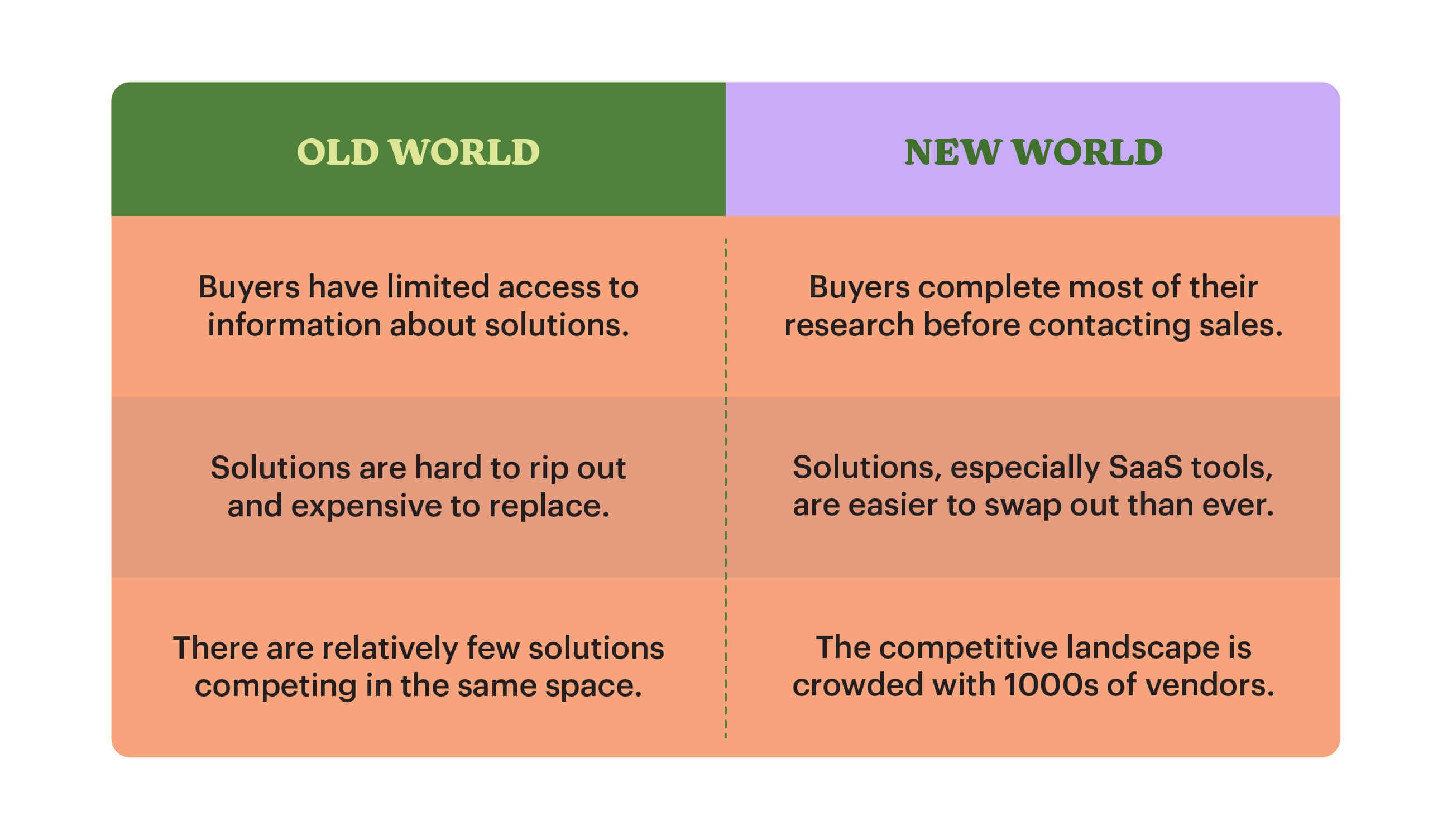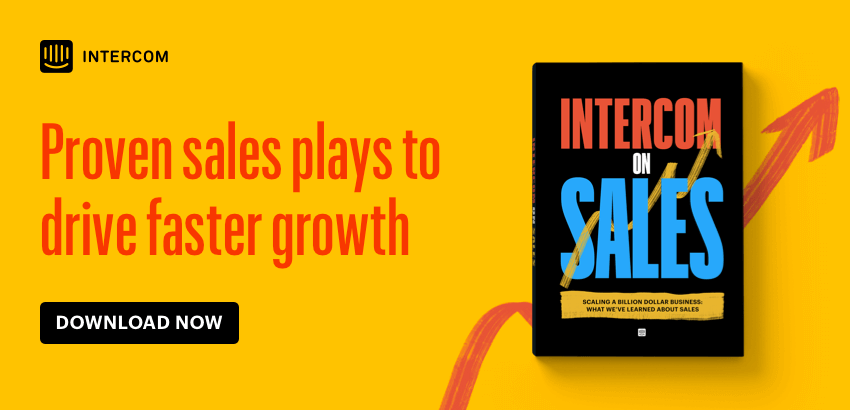
Drop the poker face: Why salespeople need to embrace authenticity
Main illustration: Hannah Buckman
I’m a crappy poker player and always have been. Part of the reason for this is I’m easy to read. For a long time, I thought my inability to bluff would hamstring me in sales, but now I see it differently.
I’ve come to view authenticity as a kind of sales superpower. Being transparent has helped me connect with customers on a deeper level than would have been possible otherwise. It’s allowed me to practice sales in a way that leads to favorable outcomes for all parties – purchases that solve real business problems and drive sustainable revenue for the company.
In today’s selling environment, authenticity is the most important virtue salespeople can demonstrate – even if it means showing your hand earlier than you would in a poker game.
The old world: one-way flow of information from seller to buyer
In past versions of the buyer-seller relationship, salespeople largely controlled the flow of information. Buyers were forced to depend on salespeople to provide the details they needed to make their purchasing decisions – everything from pricing to product specs to customer evidence.
The old world of sales was akin to a high stakes poker table where buyers and sellers wore dark sunglasses and headphones to avoid tipping their hand. Negotiations were disjointed, trust ran low, and oftentimes, these processes resulted in either buyer’s or seller’s remorse.
“The old world of sales was akin to a high stakes poker table”
If you’ve tried shopping for software in the last two decades, you’ve likely experienced the old world of sales. As a buyer, you were probably greeted by a message along the lines of:
“Interested in our product? Please fill out this contact form, and a sales rep will reach out to you in the next 5-10 business days.”
That was the status quo – buyers were expected to hand over a laundry list of details about their business without any insight into crucial questions like:
- Will this product work for me and my team?
- How much time and effort will it take before I see any value?
- What will buying this product actually cost me?
As a sales professional, I understand how this information disparity benefits salespeople by increasing their control and leverage in a deal. It’s the same advantage you have in poker when an opponent is blind to your hand, and you’re able to exploit the situation for your own benefit.
“Bluffing is fun in poker but less so in business”
This one-sided relationship has always made me uncomfortable. In the old world of sales, customers were effectively at the mercy of salespeople, making questions like “Is the sales rep telling me the whole story?” or “Am I getting a good deal?” impossible to answer. Bluffing is fun in poker but less so in business.
The new world: two-way dialogue between buyers and sellers
The good news for crappy poker players like me is that the buyer-seller dynamic has changed dramatically in recent years. We’ve gone from buyers and salespeople holding their cards close to the chest to both parties laying them out on the table. This is largely due to a couple factors:
- Software buyers are more educated than ever before. Third-party review sites like G2, research firms like Gartner, and discussions on social media give customers direct access to both data-driven and anecdotal information about products, enabling them to make better purchasing decisions.
- Software is easier to replace than ever before, especially for SaaS products. One of the benefits of the subscription model is that it holds vendors accountable for the services they provide. Buyers aren’t locked into long-term purchases the same way they were with on-premises solutions.
- There’s more competition and more choices for software buyers. Products like Amazon Web Services (AWS) and the rise of engineering talent globally have reduced the barrier of entry for software startups in recent years. This means more options for buyers to choose from and, as a result, increased competition for vendors.
These three shifts in the buyer-seller dynamic capture what I believe are the core differences between the old world of sales and the new one that we work in today:

Good salespeople periodically ask themselves, “Am I delivering value to my customers and my company?” In this new world of sales, how we deliver value has changed considerably. We’re no longer the only credible and convenient way for buyers to learn about solutions to their business problems and whether or not a product is right for them. Now we need to deliver something beyond product information and walkthroughs to add the kind of value that will differentiate us from our competitors.
“We need to deliver something beyond product information and walkthroughs to add value”
In my experience, we have to start with being authentic – that is, dropping our poker face in favor of a welcoming smile. Today’s buyers expect candid and transparent conversations, and as salespeople, our goal should be to build a mutually beneficial partnership with our customers. Becoming more transparent as a salesperson may be uncomfortable at first, especially if you were taught to keep your cards close, but what you stand to gain from being transparent and authentic is worth this discomfort.
What authenticity means for salespeople
When I first started writing this post, my wife Margaret asked me, “How does someone be more authentic?” She brings up a good point – you can’t go in front of a room of sales reps and instruct them to be more authentic in how they sell. Authenticity is hard, if not impossible, to measure because it’s inherently subjective. In the famous words of Supreme Court Justice Potter Stewart, “I know it when I see it.”
“In the famous words of Supreme Court Justice Potter Stewart, ‘I know it when I see it’”
Even though authenticity is subjective it’s a crucial element to building trust in any relationship, especially the one between you and your buyer. Their perception of your trustworthiness determines what information they share, how honestly they talk about their concerns, and how willing they are to take a leap of faith for you. If you’re selling a transformative solution to a company that’s new to your space, that’s what buying your product will feel like – a leap of faith.
What’s the best way to sell authentically? Start by acknowledging your own limitations as a salesperson. Recently, a member of my team and I spent time with a group of seasoned customer support specialists looking to transition to live chat support. In a meeting, one of their senior managers asked me for my advice on setting up Intercom. While I’ve worked with and sold to numerous support teams, the reality was the person asking this question had way more experience in the field than I ever will.

Instead of immediately advising them on their team’s ideal setup, I began by acknowledging my customer as the domain expert on this topic. I asked their team to describe their customer promise and their vision for this project. What ensued was a lively discussion about how they’d like to set up Intercom and the workflows needed to achieve their goals. By level setting with them, we were able to drive to better solutions than we would have if I had pretended to have all the answers.
Admitting when you don’t have all the answers can feel counterintuitive as a salesperson. After all, you spend so much time perfecting your sales pitch to highlight your product’s strengths. But when you think about this dynamic on a personal level, it makes sense. Like everyone else, buyers appreciate authenticity – your self-awareness makes you human and credible.
How we bring authenticity to the sales floor
It’s easy to talk a good talk about being authentic in sales. It’s a lot harder to make authenticity part of the way your sales reps actually go about selling the product. Here are a few ways we’ve brought this principle into our everyday work at Intercom.
Embrace a culture of transparency, from the top down
Building a culture of transparency needs to start at the leadership level if you want it to cascade through every part of the organization. At Intercom, transparency is at the heart of how we operate. In meetings, for instance, there’s an expectation that we will honestly and openly discuss what’s working, what isn’t, and what our strategy is moving forward. None of us are infallible, and we strive to learn from our mistakes just as sincerely as we celebrate our wins.
“We strive to learn from our mistakes just as sincerely as we celebrate our wins”
When embraced across the company, this kind of candor carries through to your customers. With a culture of transparency in place, sales reps no longer feel the pressure to flub their way through product gaps or hide from misses in prior engagements. It becomes okay to acknowledge strengths alongside weaknesses and ultimately, that helps everyone, from the rep to the customer, get to the right outcome faster.
Imagine this situation: you’re working with a new buyer and instead of tiptoeing around hard questions, you’re able to provide honest answers about your solution. How much faster would you be able to answer the question, “Should we continue working together?” How many poor-fit customers would you be able to disqualify upfront? How many more deals will your sales reps’ close now that they’re focused on the right customers? That’s what embracing a culture of transparency can do for your sales team.
Deliver value to your buyers first, then sell your product
On a tactical level, for salespeople to deliver differentiated value in this new world of sales, they need to follow a few “True Norths” to guide their efforts.
- Articulate the business impact that your product will drive. Salespeople no longer add differentiated value by providing feature-level information to buyers. Instead, their new mandate is to uncover the business impact their solution will deliver for their customers. For example, while it’s interesting to know that Resolution Bot uses machine learning to automate responses to frequently asked questions, it’s more powerful for the customer to understand just how many hours our bot will save their support team, and what the improvement will be to their bottom-line efficiency. It’s our job to add valuable context around the content that already exists.
- Acknowledge your product’s strengths and gaps. There’s no pulling the wool over buyers’ eyes anymore. When you’re competing against thousands of other solutions, you need to be transparent in acknowledging your product’s strengths and gaps. The reality is no product will solve every problem for every customer perfectly.As Todd Caponi points out in The Transparency Sale, people don’t trust products with only 5-star reviews and the same goes for your product. Your goal should be to build trust and credibility by being authentic while driving toward a mutually beneficial solution.
- Educate your buyers about the broader market in their terms. Salespeople aiming to add value should know about more than just their own product. They should be able to speak to competitors’ products and broader trends in the space. More importantly, they should be able to translate these concepts into relevant, meaningful conversations. Let me put it this way: The Great Gatsby has been beloved by readers for nearly a century, but it doesn’t offer much if it’s written in Wingdings. Great salespeople help buyers understand the potential benefits of implementing a solution in the terms that resonate with them.
Show your hand, early and often
The way people buy has changed dramatically, and while you can be both a great sales rep and a stellar poker player, it’s no longer a requirement for the job. Instead, what’s vital to your long term success as an individual and as a business are authenticity and transparency. So, encourage your sales team to embrace weaknesses in the same way they celebrate strengths and to be authentic in the way they sell. Show your hand early and often with customers, and remember: great partnerships are built on trust, not bluffs.








